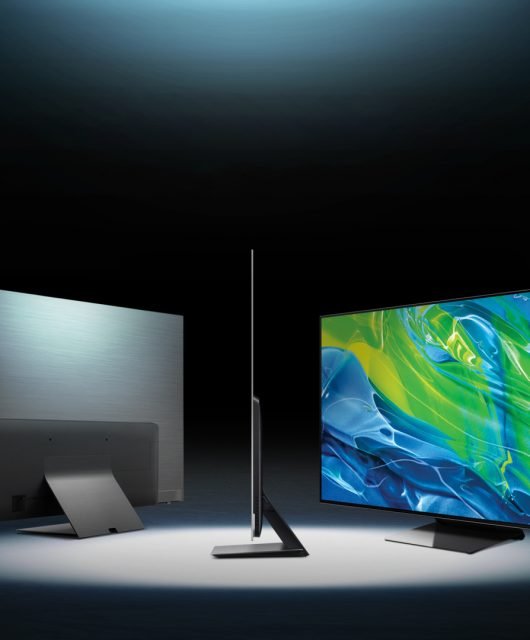An Advertising Recession Is Now Highly Probable In The First Half Of 2020 As COVID-19 Hits Key Media Owners
FMCG brands – which spend $97.2bn on advertising – are likely to weather the storm better than other sectors, as sales of food, drink and hygiene products boom on Amazon and Tmall
|
WARC Global Advertising Trends: FMCG & COVID-19
|
30 March 2020 — The global economy is set to fall into recession, with the advertising market likely to follow in the first half of this year, though FMCG brands are better-placed to weather the storm finds WARC, the international marketing intelligence service.
The Purchasing Managers’ Index (PMI) – a monthly survey of trading conditions among purchasing managers in private sector companies – for February and March show the worst results for the services sector in recent history across the US (39.1, whereby a value below 50 indicates decline), UK (35.7), Japan (32.7), the Euro area (28.4) and China (26.5).
The COVID-19 crunch is filtering through to advertising; RTL, Europe’s largest broadcaster, has stated that COVID-19 is hitting ad bookings, while in the US NBCUniversal also expects a material impact, not least because its Olympic coverage has now been postponed.
UK broadcaster ITV reports the same, notably within the travel sector (5% of its 2019 ad revenue, or £91m) and expects ad growth to be down 10%. JCDecaux is anticipating a 10% dip too.
Baidu in China advises Q1 revenue will be down by as much as 18% while other online pure players, such as Alphabet, Twitter and Facebook are also exposed – digital channels are often the easiest to switch off in a time of crisis.
The last financial crisis removed $60.5bn from the advertising market, with all media apart from online search recording declines in investment. The market took eight years to recover from this shock after accounting for inflation and currency fluctuations.
James McDonald, Managing Editor, WARC Data, and author of the research, says: “The current downturn may not hit FMCG as hard as other product sectors, but it is likely to be consequential in terms of changing consumer purchasing behaviour. A sharp increase in e-commerce activity may result in online players becoming more significant as the gatekeepers to FMCG shoppers.”
During the last advertising recession in 2009, advertising investment among the food and drink sector fell at a far softer rate than the wider industry. In the UK, the food sector reduced investment by 1.3% to £860m and the drinks sector by 2.3% to £321m. This compares to a 5.6% fall for total FMCG (to £1.98bn) in the UK and an 11.7% dip for the total UK market (to £13.11bn). TV was by far the hardest-hit advertising medium.
Sales revenue was down for each of the five largest FMCG companies in 2009, though only P&G (-11.7% to $7.52bn) and Coca-Cola (-6.9% to $2.70bn) cut ad investment. As a share of sales revenue, advertising spend held during the last crash at Unilever (13.3% of sales, or €5.30bn), P&G (9.8%, $7.52bn), Nestlé (33.7%, CHF36.27bn), Coca-Cola (9.0%, $2.70bn) and L’Oréal (30.8%, €5.39bn).
The FMCG ad market was worth $97.2bn in 2019, a 15.6% share of global advertising spend. Much of this money is spent online; for example, 55.8% – $28.55bn – of ad budgets in the household and domestic sector is invested in online advertising. This compares to a 26.9% share ($25.59bn) for toiletries & cosmetics.
The food and drinks sectors spend most on TV, at $17.0bn and $16.28bn respectively. Brand-building is important within these sectors as products are sold via third-party retailers, not directly to consumers. These sectors are better-placed to weather the impending recession as shoppers continue to buy the essentials; the apparel, automotive, retail (non-food), consumer durables and leisure & tourism sectors will be disproportionately affected by a downturn.
One in four is now shopping more online due to COVID-19. Millennials (39%) are more likely to do so, followed by Gen Xers (25%). Higher earners are also significantly more likely to than lower earners (48% versus 15%). Most shoppers are going online at the expense of visits to the store; this is particularly true in India (55% of consumers) and China (50%), but also notable in Italy (31%), the US (23%), and the UK (18%).
A WARC analysis of Edge by Ascential data shows sharp rises in the sale of FMCG products on Amazon in the US and UK over the last few weeks, with growth far exceeding both Amazon Prime Day and Black Friday. In the US, sales of hand sanitiser were up by over 650% compared to a year earlier, and 450% compared to Prime Day. Sales of pantry staples, vitamin C and disinfecting wipes more than doubled. Nielsen also recorded sharp rises in grocery sales across all US outlets, notably for powdered milk (+85%), dried beans (+37%), canned meat (+32%), and rice (+25%).
The picture was similar in the UK; sales of antiseptics & disinfectants were up by almost 300% on Amazon, while sales of soaps & hand wash trebled. In China, sales of face masks, oral mouthwash, snacks & confectionary and alcohol have more than doubled, according to data from Yimian.
The upshot of increased e-commerce activity is that online players may become more significant as the gatekeepers to FMCG shoppers. For the big manufacturers, this may increase the importance of DTC or subscription offers. Consumers are now ‘living a new normal’, and crisis-buying habits may become permanent behaviours.
A summary of WARC’s Global Ad Trends – FMCG & COVID-19 report is available here
- Consumers split on how brands should advertise
- Consumers expect businesses to step-up and help tackle COVID-19
- Six-in-ten Britons think it’s unacceptable to bulk-buy
- Brands should help keep consumers informed
- Over 80% of consumers think brands should offer flexible payment
- Gen Z is driving changes in COVID-19 media habits
- Consumers are reading more online news and watching more linear TV
- COVID-19 makes mobile gaming and short video more popular in China
- E-commerce shopping more frequent because of COVID-19
- Indonesia lags APAC for social distancing
- Nine in ten consumers have changed their behaviour because of COVID-19
WARC is running a special series on marketing in the COVID-19 crisis available here
Global Ad Trends, a bi-monthly report which draws on WARC’s dataset of advertising and media intelligence to take a holistic view on current industry developments, is part of WARC Data, a dedicated independent and objective one-stop online service which rigorously harmonises, aggregates, verifies and evaluates data from over 100 reputable sources, including Nielsen, featuring current advertising benchmarks, forecasts, data points and trends in media investment and usage.
|
WARC Data is available by subscription only. For more information visit https://www.warc.com/data |





